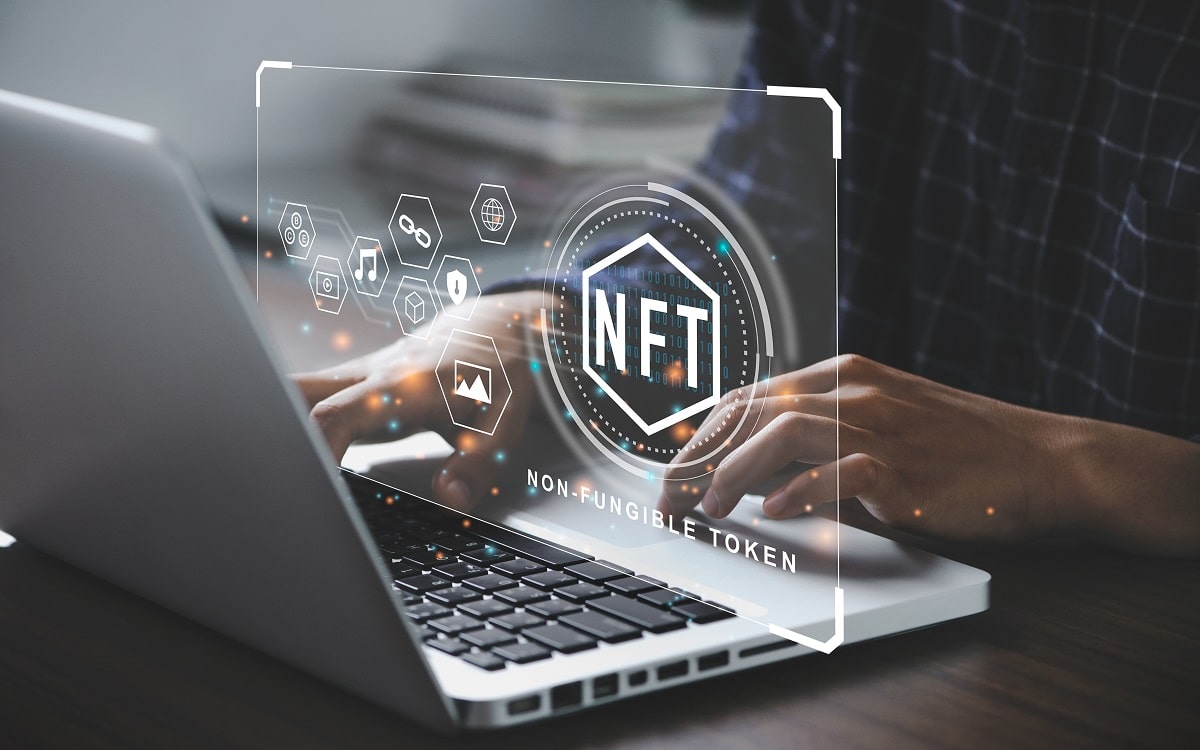If 2021 was the year the world collectively tried to get its head around what NFTs are, 2022 is the year to consider getting involved.
Whether you’ve been browsing Twitter and got jealous of all the Bored Apes Club profile pictures or you’re interested in the grassroots power of NFTs to support artists, maybe that’s the conclusion you’ve come to as well.
But before you jump right in, you’ll need to know how to invest in NFTs in the first place.
The good news is that understanding how the investment process works isn’t quite as complex as figuring out how NFTs work in the first place, especially if you’re familiar with investing in cryptocurrencies and storing them in a wallet. But it does involve a few extra steps.
To make sure you’re an expert on the topic, I’ll run through:
- The basics of NFTs
- Choosing between types of NFTs
- Deciding where to buy NFTs
- Whether investing in NFTs is a good idea
How NFTs Work
Before we get too carried away with the finer details of investing in investing, it’s important to quickly clear up what NFTs actually are — but feel free to skip this section if that’s old news to you.
NFT is short for non-fungible tokens, and the key element detail is the “non-fungible” element. When it comes to currencies like US dollars or Bitcoin, there’s no difference between one unit of that currency and another.
You can buy the same things with the $5 in your pocket as you could with the $5 in somebody else’s pocket.
But NFTs aren’t quite currencies, because they represent ownership of one specific thing.
The concept also goes one step further than this, because smart contracts — mostly on Ethereum — ensure the ownership is enforced
. Once somebody buys an NFT and owns the associated item, the information gets put onto a public ledger that everyone can see, and it’s updated every time that ownership is transferred (aka when the original owner sells their NFT).
How to Invest in NFTs
I could give you a brief summary of how to invest in NFTs in a few steps:
- Head to an NFT exchange.
- Fund your crypto wallet.
- Use the funds in it to buy the NFT(s) you want.
- Store the NFT(s) in your wallet.
It really is that simple — provided you know how to go about each of the steps above.
Each stage of the process has its own set of considerations. You can’t buy an NFT from an exchange until you know the type of NFT you want and the right marketplace to purchase it from.
You’ll also have a choice of buying it for a fixed price or through an auction (some marketplaces offer both options and some just one).
There’s a lot more to say, so let’s get into it.
Deciding Which NFT to Buy
NFTs are mostly known for representing digital art — you’ve probably seen plenty of them popping up on Twitter, especially popular collections like CryptoPunks.
But these are far from the only kind of NFTs available. They can represent plenty of other digital items. Some examples include:
- Domain names
- Trading cards
- Photography
- In-game items
- DeFi
- Music
- Memes
That’s right — you can literally own a meme. Who knows what new categories could be coming in the future?
NFTs can also be used to represent physical objects, and plenty of successful brands (including Adidas and Walmart) are considering or creating NFTs to represent their products instead of relying on eCommerce stores.
Knowing the type of NFT you want to buy will partly determine which marketplace you choose. Some are specialists in certain types of NFTs, while others are broader.
But which category is your best bet?
Once you start thinking about investing serious sums, it’s advisable to only invest in areas you know about.
So, if you happen to be a history of art graduate, you used to own a blog (meaning domain name knowledge), or a big gamer, that could be a good place to start. Otherwise, it’s time to get educated!
Choosing the Right Marketplace
The types of NFTs available for purchase on a marketplace aren’t the only thing you need to consider. Other factors to look for when you’re choosing between them include:
- Whether you can create and list your own NFTs on the platform — and whether you have to pay upfront for the cost of doing so.
- If the marketplace shares profits to creators as it’s transferred (kind of like royalties).
- Fees for buying and selling NFTs — some marketplaces only charge sellers, others charge both parties.
- Payment methods accepted — most marketplaces will only accept cryptocurrencies, but some may accept fiat currency too.
- Wallets you can integrate with — this is where you’ll be storing your NFTs.
Since Ethereum is the biggest platform that executes smart contracts, it’s currently what most NFTs are based on. As a result, you’ll likely need to use ETH to buy NFTs. As far as wallets go, MetaMask and Coinbase Wallet are accepted by most platforms.
OpenSea and Rarible are the market leaders in the NFT world, but there are also some more niche marketplaces out there that you might want to consider such as Zora but let’s run through a few of your primary choices.
OpenSea
Starting with the biggest NFT marketplace of all, OpenSea was launched in 2018 — that’s when most of us had never even heard the term “NFT,” so it deserves a decent amount of credit.
As one of the biggest platforms around, it contains NFTs that fit into all the categories we’ve mentioned here, although it does have more of a focus on digital art right now since that’s where the bulk of the market lies.
The marketplace has also partnered with brands that include Saturday Night Live, Reddit, and CocaCola — as well as being a flex on OpenSea’s part, this shows just how widely accepted NFTs are now.
You can even create your own NFTs on OpenSea.
Rarible
Rarible isn’t quite on the same level as OpenSea — it was only launched in 2020 — but it’s
certainly made up for lost time as it’s now among the most high-profile NFT marketplaces. As with OpenSea, you can also create and list NFTs on the platform, and it also sells NFTs that fall into most of the major categories.
However, Rarible is more than just a pared-down version of OpenSea. It has its own native token, RARI, which is at the center of using the platform.
This can make it a little harder for beginners to get their head around how everything works, but it’s a perk for enthusiasts as token holders have a say in how the platform is run.
Nifty Gateway
Although Nifty Gateway isn’t quite as well-known as Rarible and OpenSea (yet), it has some big NFT moments under its belt.
Music artist Grimes is known for being a pioneer in the NFT space, and she actually made her debut here, selling some artwork related to her music for $5.8 million in March 2021.
There have also been plenty of other high-value sales on the platform.
Fun fact: Nifty Gateway is owned by the Winklevoss twins — yes, that’s the Olympian rowers who allegedly came up with the original idea for Facebook. It seems they haven’t been robbed this time around.
NBA Top Shot Marketplace
We mentioned that some NFT marketplaces can get pretty niche, and NBA Top Shot Marketplace is the perfect example.
It exclusively sells merchandise related to the NBA (with everything officially licensed by the league), such as video clips from games.
Probably not something for the average investor as you’d either need specialist knowledge or a lot of money you’re happy to lose, but it’s interesting enough to get a mention.
Should you Invest in NFTs?
So, now you know how to invest in NFTs, there’s only one question left to ask yourself: should you go ahead and take the plunge? There’s no right or wrong answer to that, but here are some points to consider.
If we’re being negative, I’d have to admit that NFTs are a fad to some extent.
That doesn’t mean that the technology won’t last, but I’m doubtful that setting random artwork as a Twitter profile picture is where the bulk of the market’s value lies.
We could be in a situation similar to the dot-com bubble where investors are throwing money about without knowing what’s going to stick.
So, proceed with caution.
But don’t let this scare you off. If you’re cautious and really understand what you’re investing in, chances are that you’re ahead of the pack who just want to get in on the craze.
Remember: NFTs are ultimately about decentralization and a new way to verify ownership, which could offer a new way to do business for major companies and empower creators.
If you think something is genuinely worth collecting and you invest in its NFT early, there’s definitely a lot of scope to make money here.
Although aspects of the NFT market probably won’t last, other segments are massively uncapped right now and have huge scope for growth.
Get in on the Hype
Whether you decide to dive head-first into the world of NFTs or wait on the sidelines for a while to figure things out, hopefully, you now feel a little more confident about how this market works.
Whether your future self will regret or be grateful for the decisions you make today, time will tell. But one thing’s for sure — NFTs are fascinating, and the more you learn, the more you want to know.
More From Wealthy Living
- Things You Should Know About the STAR Method
- 6 Dividend Kings Stocks That Should be on Your Watchlist Right Now
- Everything You Should Know About Rick Ross’ Net Worth and Other Facts
Disclosure: The author is not a licensed or registered investment adviser or broker/dealer. They are not providing you with individual investment advice. Please consult with a licensed investment professional before you invest your money.
Tim Thomas has no positions in the stocks, ETFs, mutual funds, forex, cryptocurrencies, or commodities mentioned.
This post was produced and syndicated by Wealthy Living.
Featured image credit: Shutterstock.





